After studying the composition of e-liquids, we will take a closer look at one of their major constituents: flavours. We hear a lot about food-grade flavours, but are all flavours suitable for inhalation? Which criteria need to be taken into account when developing e-liquid recipes? We will be examining the question from all angles with Laboratoire Sense, who are experts on the subject.
How the sensory system works
Our sensory system is made up of five senses: touch, sight, hearing, taste, and smell. Vaping primarily arouses the final sense mentioned, smell. The olfactory system is very complex. It is our oldest, most powerful, and also most subconscious sense. Indeed, our olfactory memory starts building even before we are born and is enhanced on a daily basis. Smells and flavours affect our moods and enjoyment, without us being aware of it. An unpleasant smell can intensify our sense of insecurity, whereas a smell evoking a pleasant childhood memory will be comforting. Smell is a chemical sense produced by volatile molecules, which are very light. These molecules can either pass orthonasally (directly through the nose), inducing smell, or retronasally (through the back of the mouth), inducing flavour.
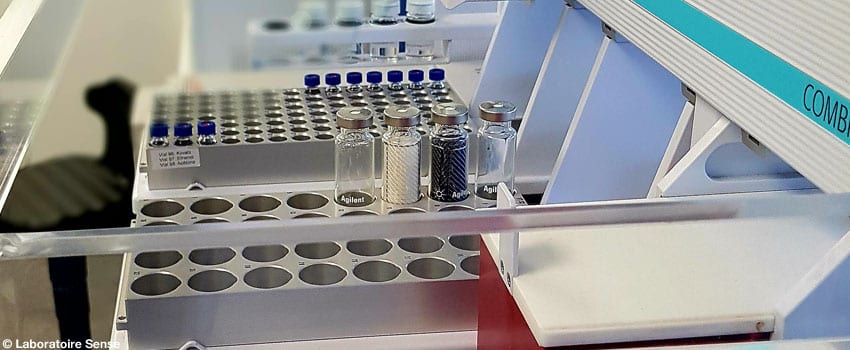
A smell or a flavour are made up of a certain number of molecules (for example, coffee is composed of over one thousand aromatic compounds). All these compounds are directed to the back of the nose by the olfactory epithelium where they will be “trapped” by the olfactory cilia steeped in nasal mucus. The olfactory receptors, which are sensitive to certain smells, are located at the end of these cilia.
In total, we have approximately 400 olfactory receptors, capable of detecting molecules. The brain, more specifically the limbic system, then helps identify the smell/flavour and respond to the sensual effect. Indeed, before a smell/taste can be identified, the emotional system takes over (I like it/I don’t like it). Obviously, our sense of smell is highly personal: each individual, based on their origins, culture and experiences, will therefore be more or less sensitive and drawn to a given smell.
The process occurring in the mouth is complementary, but different. A clear distinction needs to be made between taste and flavour. Taste is triggered, not by volatile molecules, but by much heavier sapid molecules, which are not detected in the nose but in the tastebuds found in the mouth.
There are five basic tastes: sweet, salty, bitter, sour, and umami. The mouth also contains the trigeminal nerves, which detect fizz, cooling, or spiciness. When sampling a food, the term flavour tends to be used.
How precise is the olfactory system?
“We tend to vape several more times a day than we eat yoghurt, for example. Flavour balance and intensity are critical in helping an e-liquid become an all-day habit.”The olfactory system is the most powerful sensory system. It is capable of detecting a smell of the order of one thousandth of a ppb (or a concentration in water of 1 x 10-12). The human sense of smell is so effective that it cannot be replaced 100% by a machine (whether the machine is a chromatographic apparatus or an electronic nose). Detection devices can help save time for quality control, but humans are a necessary part of the process involved in creating a scent or a flavour.
Is vaping a good playing field for smells and tastes?
Vaping is an excellent playing field for flavourists due to the sizeable challenge involved – the flavour is the only guarantee that a user will enjoy the product or not. There is no room for error as the flavour is not based on a food (flavoured chocolate already has cocoa forming its basic taste). The flavour is therefore “bare” and as such must be characteristic and balanced to be enjoyed. However, there is also a challenge in terms of the consumer and their success in quitting tobacco use. The flavour should obviously be pleasant, but above all it should not be nauseating. We tend to vape several more times a day than we eat yoghurt or dessert, for example. Flavour balance and intensity are critical in helping an e-liquid become an all-day habit.
Food-grade flavours
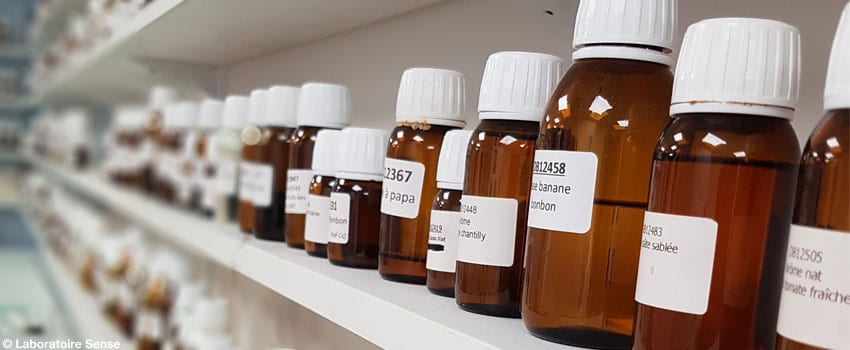
This term is redundant! From a regulatory viewpoint, a flavour is intended to be food-grade. This is not the case of a fragrance which can be made up of non-dietary compounds. Some players in the vaping market have stressed the use of “food-grade” flavours to reassure the consumer that they are not using compounds intended for the fragrance industry. The flavours in e-liquids have two specific properties: they are heated and inhaled. For example, in our laboratory, when we formulate a yoghurt flavour, we use compounds which can break down when heated, which is not a concern as the yoghurt is stored at 6°C. It is a different matter when formulating vaping-specific flavours as it is necessary to ensure that they are “heat-resistant”. In addition, as the flavours are inhaled, we take particular care with compounds liable to pose problems. There has been much talk about diacetyl; therefore, we advise caution and compliance with AFNOR standard XP D90-300-2 which prohibits the voluntary addition of diacetyl in an e-liquid.
Synthetic flavours and natural flavours
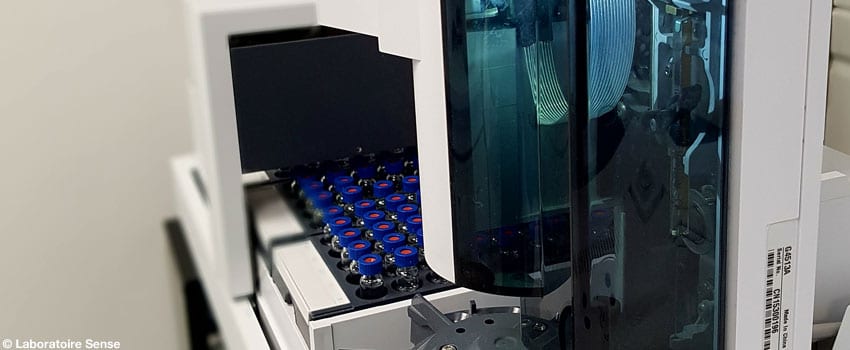
One is not preferable over the other, it all depends on personal choices and convictions. There are 3 types of raw materials that can form the aromatic part of a flavour:
- Aromatic preparations: these are extracts derived directly from natural sources, such as essential oils, oleoresins, infusions, distillates, etc. These raw materials are natural.
- Natural aromatic substances: these are compounds derived from a natural product. An extraction, purification and concentration process takes place before the desired molecule is obtained. These raw materials are natural.
- Aromatic substances: these are compounds obtained by chemical synthesis. These compounds include compounds identical to those found in natural sources, but also 100% artificial compounds which do not exist in the natural state in our environment.
Here is an example: Natural maltol = synthetic maltol (nature-identical) ≠ ethyl maltol (artificial) The technical data sheet, MSDS, food compatibility certificate, and certificate of natural origin must be obtained from the supplier where applicableUnfortunately, EC Regulation 1334/2008 does not permit a differentiation between the use of “nature-identical” aromatic substances and the use of “artificial” aromatic substances. The only way to be sure of not vaping artificial raw materials is to use e-liquids that have been formulated exclusively with natural flavours. At Laboratoire Sense, we have made the choice to only create liquids with natural flavours. The main reason driving manufacturers to opt for artificial aromatic substances is economic. A natural vanilla flavour, for example, can be up to 400 times more expensive than an artificial vanilla flavour.
Which precautions does a manufacturer need to take when purchasing flavour concentrates from a catalogue?
Particular care must be taken with e-liquids containing sugar. Once heated, sugar turns into caramel and can produce toxic fumes.Firstly, it is necessary to ensure that the flavour is a flavour from a regulatory point of view, and as such made up only of aromatic compounds. The technical data sheet, MSDS, food compatibility certificate, and certificate of natural origin must be obtained from the supplier where applicable. Within the framework of the TPD, the e-liquid manufacturer is responsible for marketing not only the finished product, but also its components, including the flavour. Therefore, we recommend sourcing a flavour supplier who is committed to vaping applications.
Adding sugar to recipes
As mentioned above, sugar is sensed by the tastebuds and not by the olfactory epithelium. Therefore, a flavour is not sweet per se, but merely suggests a hint of sweetness. A “Tiramisu” or “Cookie” flavour is not sweet, but is interpreted as being so by the brain. Therefore, there is no reason to be wary of such flavours. On the other hand, particular care must be taken with e-liquids containing sugar. Once heated, sugar turns into caramel and can produce toxic fumes. Sugar is not made to be inhaled. AFNOR standard XP D90-300-2 chapter 4.2.7.4 is very clear in this regard: no sugars or sweeteners can be used as ingredients in an e-liquid composition.
Source of flavours
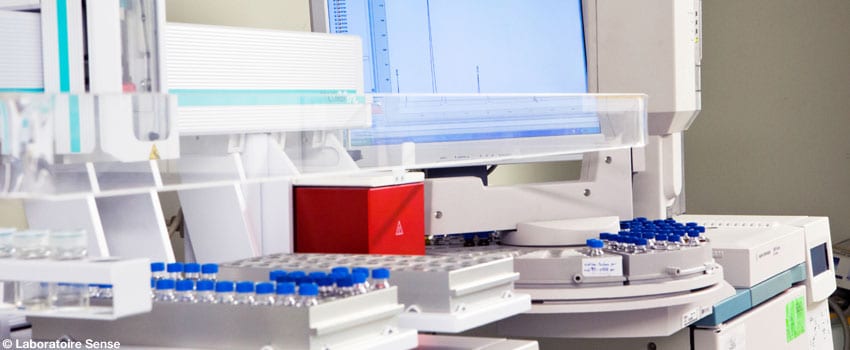
Manufacturers sourcing from the international market need to be careful. Indeed, the food compatibility legislations in force are different from one country to another. For example, some compounds are authorised by U.S. regulations, but not in Europe. Manufacturers should systematically ask their suppliers whether they devise and produce food-grade flavours in line with the regulations in the country where the product is marketed.
Flavour suppliers
Without a doubt… Some flavour suppliers also work closely with the tobacco industry. So, everyone has their own value system and fortitude… (smiles)
Important criteria to be taken into consideration
“DIY manufacturers need guidance as bases or liquids with 0 mg/ml nicotine and flavour concentrates are not notifiable substances”Some years ago, there were too many shops for which the purchase price was the sole criterion of choice for e-liquids. The situation has changed considerably. The vast majority of store managers are aware that they will gain customer loyalty with brands committed to quality.
How to choose? First of all, the basics – if your supplier is unable to supply you with a technical data sheet, an MSDS or an emissions analysis for their liquids, steer clear! You can also ask whether they are in compliance with AFNOR XP… This will indicate that their liquid formulations do not contain diacetyl, that they do not use dyes and that they use flavours in compliance with Regulation (EC) No. 1334/2008.
DIY e-liquid
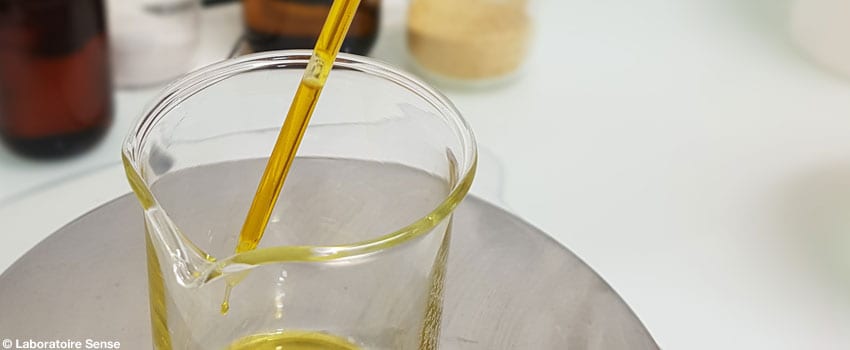
The DIY sector should not be banned, as some would like, but it does need guidance. A ban often makes something more appealing and encourages deviations from the rules. Deviations can create problems, as can the introduction of fats, sugar, alcohol, etc. Yes, DIY manufacturers need guidance as bases or liquids with 0 mg/ml nicotine and flavour concentrates are not notifiable substances within the framework of the TPD Directive. This is no reason to let things get out of control. Most of those involved in the French DIY sector are well aware of this.
We conduct emissions analyses for some of them, even though they are not obliged to do so. Users need guidance too. Preparing a liquid is more akin to chemistry than cooking. I have seen some strange advice between private users on the Internet, such as adding sugar or vodka to preparations, measuring the flavour at 40% when the manufacturer recommends 10%… Users need to be well-informed and follow the manufacturer’s advice.
Additives in e-liquids
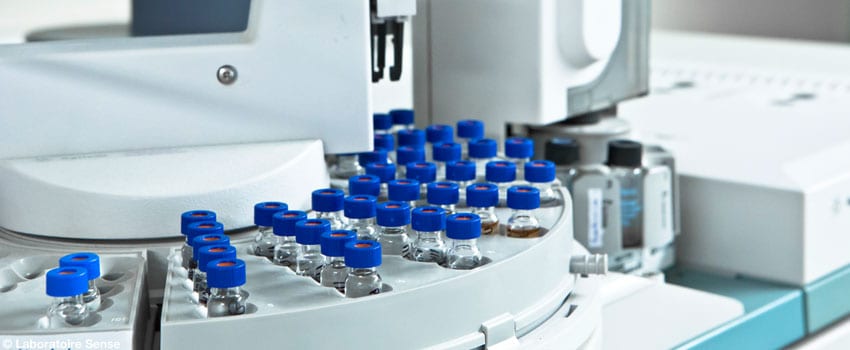
Should we be wary of certain additives? Yes. For example, what does a colour additive contribute to an e-liquid? Does a coloured e-liquid encourage tobacco cessation? Some additives do not pose any problems, others needs to be measured correctly. Deviations can create problems, as can the introduction of fats, sugar, alcohol, etc.
Flavours and aldehydes are often combined. What does that mean exactly?
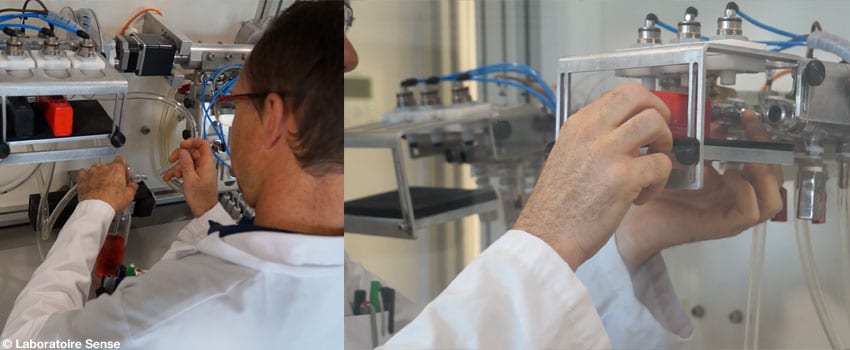
Aldehydes are a chemical family belonging to the carbonyls, where the function is made up of a carbon atom bound to an oxygen and a hydrogen (where R is the remainder of the formula). There are aromatic aldehydes, which solely have an organoleptic function, i.e. their sole purpose is to create an odour. These are the “good” aldehydes. They should be distinguished from the “bad” aldehydes such as acetaldehydes, formaldehydes, etc. These are not food-compatible and are toxic when inhaled. They are not used for manufacturing flavours as they are not authorised. Nevertheless, they can be formed by chemical reaction. The concentration of these aldehydes in emissions is particularly important. For this reason, we analyse the emissions of each liquid with our R-Vape9 vaping robot. We then compare them to the “guidelines” issued by ANSES for France, and SCOEL for Europe. We can take reassurance in the fact that, to date, we have never analysed a liquid in excess of these guidelines for formaldehyde, acetaldehyde, or acrolein.
Flavour concentrations
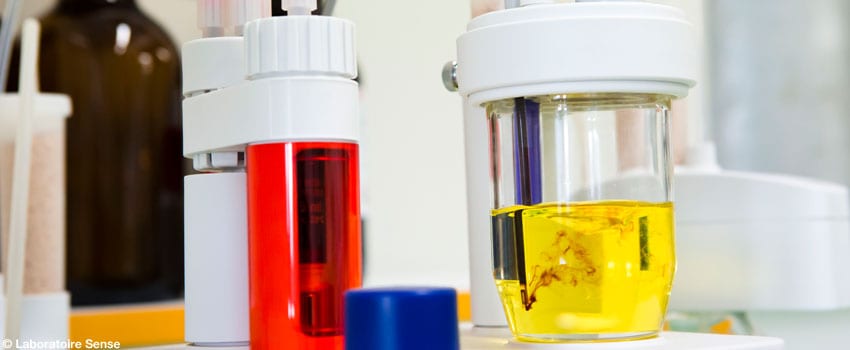
Is it necessary to adhere to a specific concentration?
That obviously depends on the composition of the flavour. Some compounds represent no risk at low doses and can be more problematic at high doses. The manufacturers responsible offer products with an adapted composition and dosage. The DIY manufacturers responsible also make dosage recommendations based on the emissions analyses or on the composition of their flavours. It is up to the user to follow this advice.
Safety
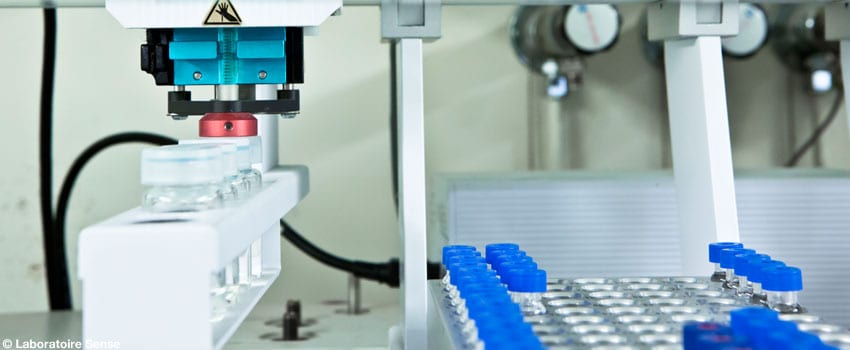
Some aromatic compounds interact with cell membrane constituents, which explains their bactericidal and also their antitumour action. Placing a cell in contact with a pure molecule or a concentrated flavour containing cinnamaldehyde results in cell death, but this obviously does not occur during vaping, where the aromatic compound content is highly diluted and where the compound is not in direct contact with the cell, which is the case on the other hand of the published studies using in vitro cell culture! It is the manufacturer’s responsibility to adhere to the DNEL (see boxed text) due to inhalation of cinnamaldehyde or benzaldehyde, for example, based on e-liquid intakes measured in puffs and the exposure doses of AFNOR standard XP-90-300-3.
What is the DNEL?
The DNEL is the Derived No-Effect Level. It corresponds to the exposure level below which no harmful effect is expected. Therefore, it consists of the substance exposure level over which humans should not be exposed.
There has been much talk about diacetyl, just like acetyl propionyl. Yet not all butter-flavoured e-liquids have disappeared from the market. Which alternatives are currently used?
Some will use acetoin for example. It is a precursor of diacetyl, i.e. the acetoin molecule can be converted into a diacetyl molecule. It is all a question of dosage. Acetoin should be used sparingly to avoid obtaining more than 22 ppm of newly formed diacetyl in the liquid and thus comply with the AFNOR standard. The best flavourists know how to find alternatives by combining different molecules, but they are very secretive about it…
Do you think we are moving toward safe vaping?
Of course! However, I would like to make the point that most of the questions that you have asked me have been safety-oriented. We need to hammer home that vaping is already extremely safe compared to cigarettes. We should always bear that in mind. There is no doubt about it! I understand that consumers, legislators, consumer associations are just waiting to catch us out… In the first half of the 20th Century, some advertisements extolled the health virtues of tobacco! Was that a lie, ineptitude, manipulation? I think it is absolutely right for consumers to have high expectations, and just because vaping is already safe, that doesn’t mean that we don’t need to work on dispelling any doubts.
Interview in December 2017 with Aurore Fontaine, flavourist, and Benoît Eclache, Managing Director of Laboratoire Sense (Phodé Group). https://www.laboratoire-sense.com
